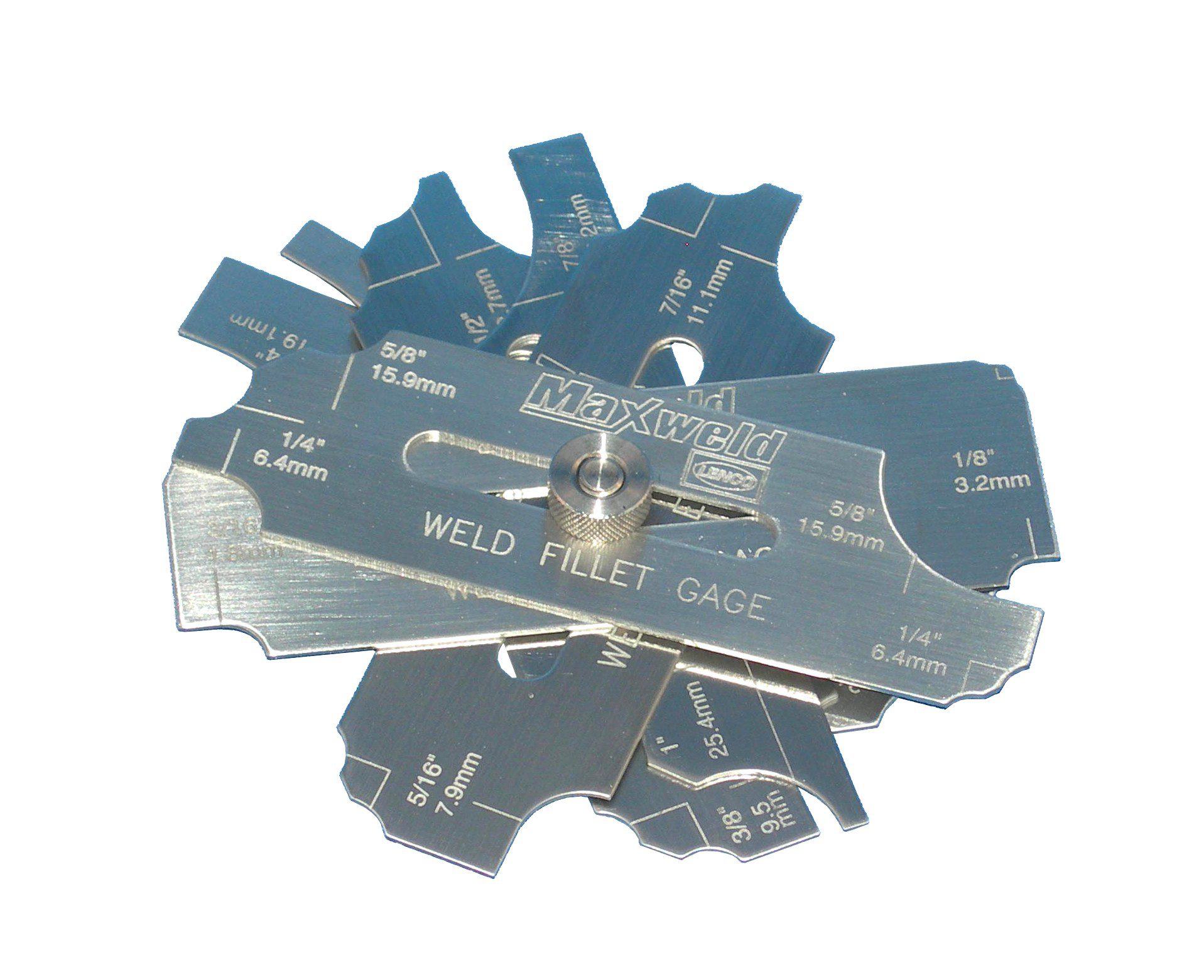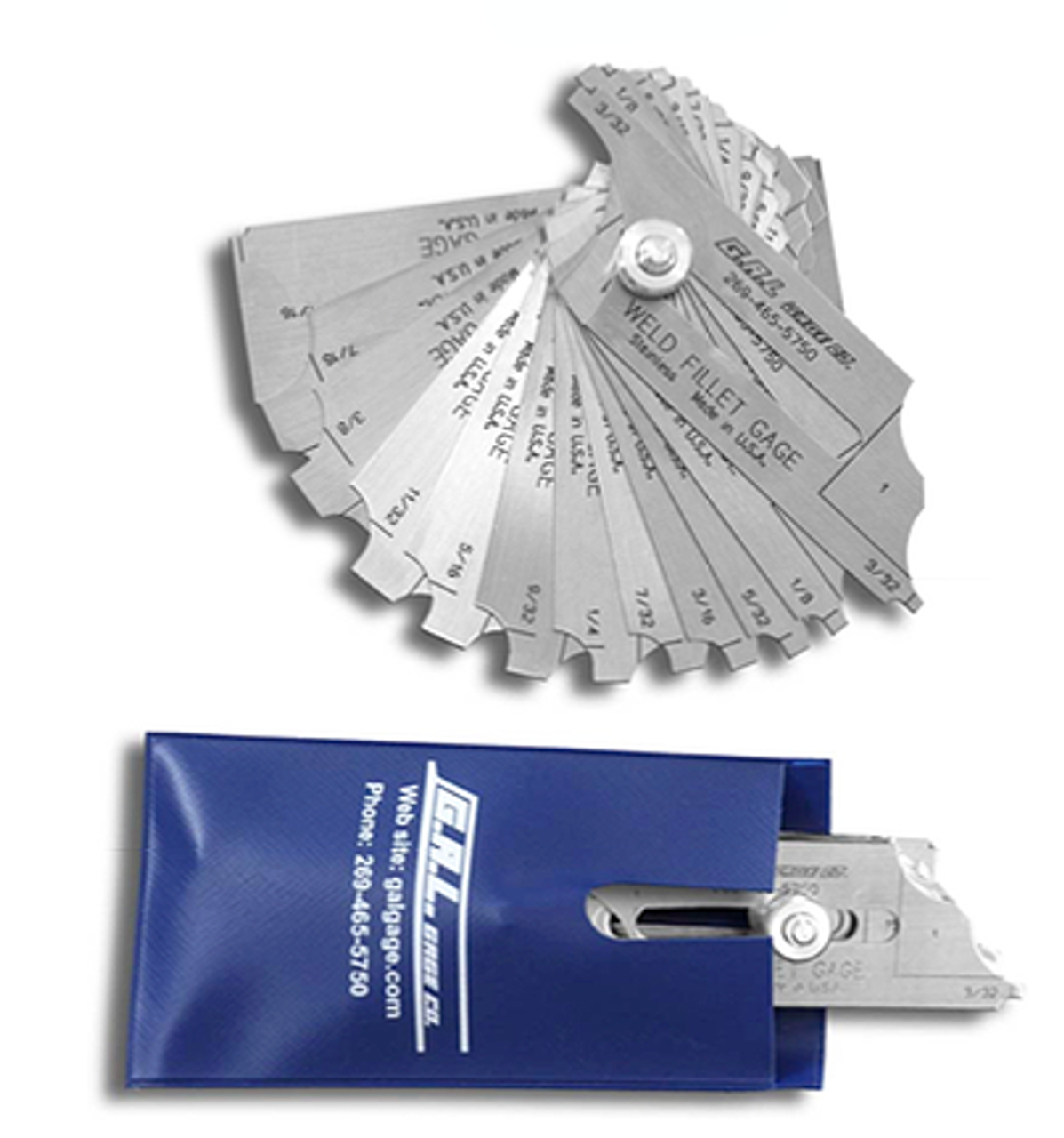Innovative Strategies to Fillet Weld Inspection and Screening: Enhancing Weld Quality and Conformity Requirements
In the world of welding, the top quality and stability of fillet welds play a critical role in guaranteeing the structural soundness and reliability of different commercial elements. With the continuous drive for improved effectiveness and compliance with rigorous standards, the expedition of cutting-edge techniques to fillet weld evaluation and screening has actually ended up being important. As sectors evolve, the typical approaches might no more be adequate in meeting the demands of modern welding applications (Gauge Fillet Weld). By embracing innovative innovations and techniques, a new perspective of opportunities emerges in the world of weld high quality evaluation and adherence to conformity requirements.
Advanced Non-Destructive Testing Techniques
Making use of state-of-the-art innovations, advanced non-destructive testing approaches play a vital function in making certain the integrity and top quality of fillet welds. These methods, such as phased selection ultrasonic screening (PAUT) and magnetic bit testing (MPT), deal comprehensive insights into the weld's inner structure without triggering any kind of damage to the material. PAUT, for example, uses several ultrasonic aspects to check the weld from numerous angles, providing an extensive visualization of prospective issues like absence of blend or fractures.
Likewise, MPT is effective in spotting surface-breaking defects by applying an electromagnetic field and iron particles to the weld area. This approach is specifically beneficial for determining suspensions that might endanger the weld's strength. By utilizing these advanced non-destructive screening strategies, weld assessors can accurately evaluate the quality of fillet welds, making sure compliance with market criteria and guidelines. The capability to detect imperfections early not just boosts weld high quality yet also protects against pricey rework or failures in architectural integrity, underlining the value of these cutting-edge screening approaches in welding inspections.
Robotics and Automation in Evaluation

The integration of robotics and automation has actually transformed the inspection procedure for fillet welds, boosting effectiveness and precision in high quality analysis. Robotics use precise control and repeatability in checking welds, making sure regular and trusted results. Automated systems can be configured to follow specific evaluation courses, making sure detailed protection of welds and minimizing the threat of human mistake.
Robot evaluation systems furnished with advanced sensing units can find and determine weld functions with high precision, supplying detailed information for evaluation. These systems can identify issues such as fractures, lack of fusion, and porosity, allowing prompt corrective actions to be taken. Additionally, robotics and automation permit for real-time data collection and evaluation, providing immediate feedback to drivers and assisting in fast decision-making processes.
Furthermore, using robotics and automation in fillet weld assessment boosts general efficiency by minimizing evaluation times and boosting assessment throughput. By improving the examination process, suppliers can ensure weld quality and conformity standards are fulfilled efficiently, ultimately causing set you back savings and improved product top quality.
Utilizing Expert System for Analysis
Artificial knowledge plays a pivotal duty in enhancing the effectiveness and accuracy of evaluation in fillet weld examination processes. AI formulas can swiftly refine huge quantities of information from weld examinations, spotting issues or disparities that may be testing to identify with the naked eye.
Furthermore, AI systems can find out from previous evaluation information, constantly improving their capacity to determine potential problems and discrepancies in fillet welds. This flexible knowing ability improves the total high quality control procedure, minimizing the probability of human error and guaranteeing that welds fulfill the needed criteria. By integrating fabricated knowledge right into fillet weld analysis, industries can accomplish greater levels of efficiency, uniformity, and compliance in their inspection methods.
Portable Tools for On-Site Examination
Enhancing area assessment performance, the adoption of portable devices reinvents on-site analysis processes for fillet welds. These tools supply adaptability and comfort, allowing examiners to perform thorough examinations in various locations, consisting of tough or remote settings. Mobile tools such as ultrasonic testing gadgets, magnetic particle inspection tools, and electronic radiography systems give real-time information and high-resolution imaging abilities, enabling fast decision-making and instant responses on weld high quality.
One significant advantage of portable tools is their capability to improve assessment treatments, lowering downtime and boosting general efficiency - Gauge Fillet Weld. Examiners can conveniently deliver these devices to various work websites, eliminating the requirement for transferring hefty machinery or parts to off-site centers. Furthermore, the mobility of these tools promotes cost-effectiveness by decreasing transportation costs and increasing evaluation timelines
Additionally, the usage of mobile tools for on-site assessment promotes proactive quality control steps, as inspectors can promptly identify and attend to any potential welding defects or inconsistencies. By integrating these innovative innovations into on-site inspection methods, welding professionals can make certain compliance with sector standards and check my blog improve weld quality, eventually bring about improved structural honesty and safety in numerous welding applications.
Integration of Information Administration Solution

Having enhanced on-site assessment processes with the utilization of portable tools, the next stage entails the seamless assimilation of information administration systems to even more boost efficiency and data analysis abilities in fillet weld evaluation and testing. By integrating information management systems right into the evaluation process, companies can simplify data collection, storage space, and analysis. This combination enables for real-time monitoring of weld high quality, immediate identification of problems, and timely decision-making to remedy any concerns that might develop during the evaluation procedure.
The combination of data management systems allows seamless interaction between various stakeholders entailed in the examination procedure, promoting collaboration and enhancing total top quality control procedures. Eventually, the combination of data administration systems offers to boost the standards of fillet weld inspection and testing, making certain compliance with sector laws and boosting weld top quality.
Conclusion
To conclude, cutting-edge approaches to fillet weld assessment and testing have actually dramatically enhanced weld quality and conformity requirements. Advanced non-destructive screening approaches, robotics, automation, artificial intelligence, mobile tools, and information administration systems have actually revolutionized the dig this way weld inspections are conducted. By using these innovations, industries can make sure that welds meet the needed high quality requirements and guidelines, inevitably improving overall effectiveness and safety in welding processes.

Having actually maximized on-site inspection procedures via the usage of portable tools, the following phase entails the smooth assimilation of information monitoring systems to additionally improve performance and data evaluation capabilities in fillet weld evaluation and screening. Ultimately, the combination of data management systems offers to raise the standards of fillet weld evaluation and testing, guaranteeing conformity with sector guidelines and boosting weld high quality.
